There are a total of 88 constellations in the night sky. A few constellations are unique to ‘down under’. Here, the sky is ‘upside down’ compared to the northern hemisphere and groups of stars display particular patterns of interest because of the orientation and cultural significance.
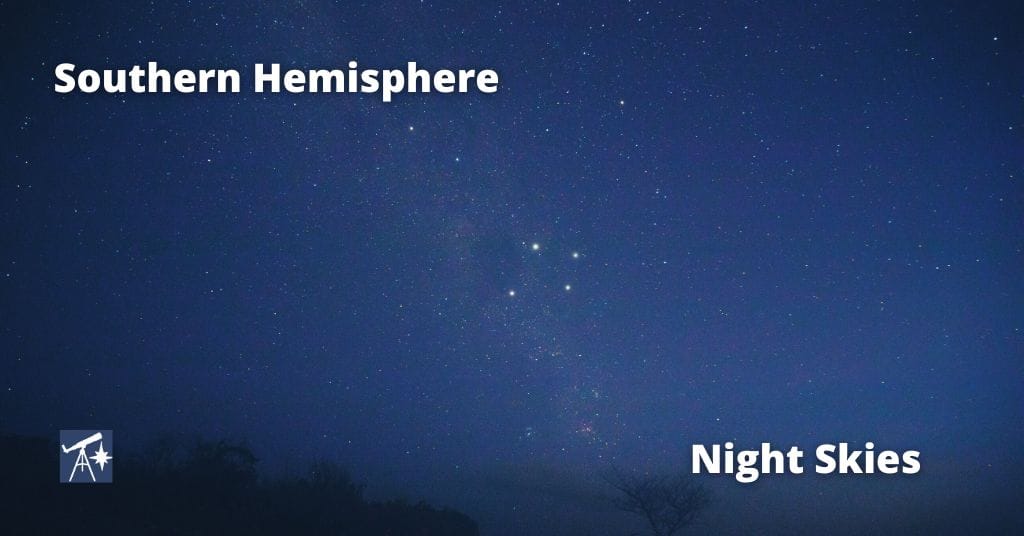
I mentioned how the Moon appears upside down in the southern hemisphere when I wrote about viewing the Moon.
If you were to travel from northern America to Australia and look up at the night sky you’d be struck by the difference in the stars visible and how they are orientated.
Keep scrolling to the end and you’ll see the emu in the sky! and the southern hemisphere types of constellations with pictures.
Spotters often identify star patterns, or asterisms, in the night sky more readily than the constellations.
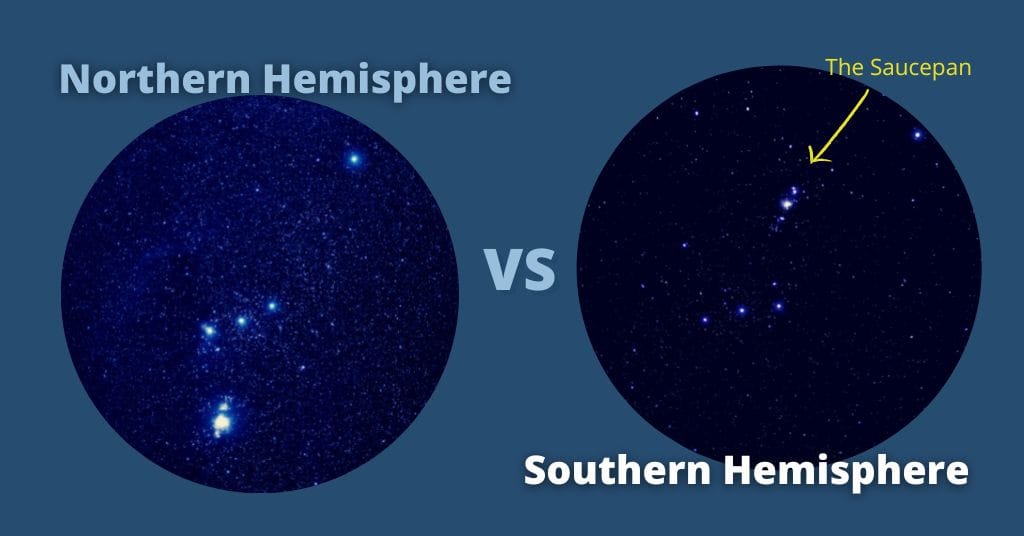
An asterism is a group of stars appearing in a pattern that’s visible to current-day Earth viewers. It can sit within a single constellation or cross over two or more constellations.
Pleiades
Pleiades is known as The Seven Sisters. It’s a group of bright stars seen by the naked eye. Early stargazers recognized seven, the brightest stars in the star cluster of Pleiades, which modern technology tells us involves at least 144 celestial bodies.
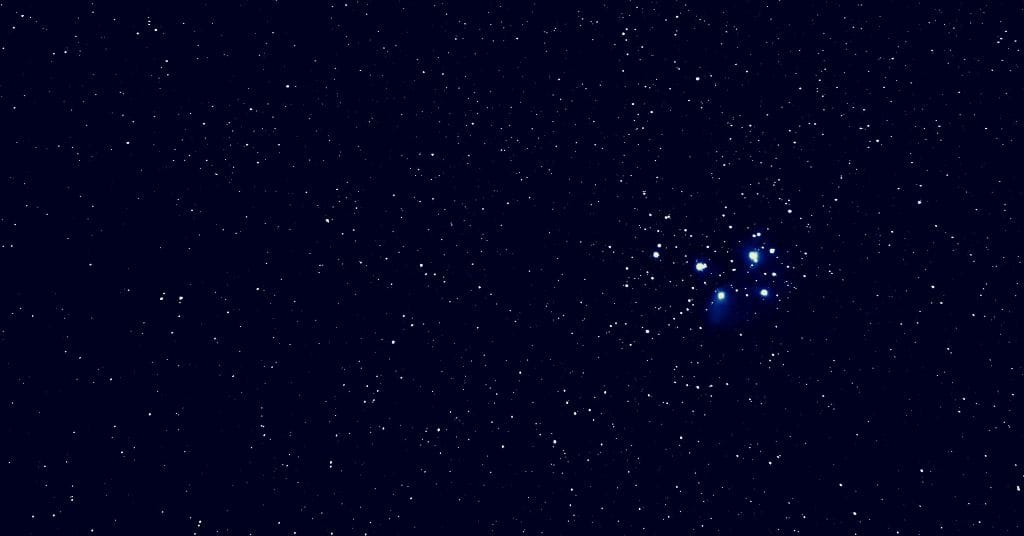
Several Aboriginal Australian tribes had their own cultural story about the Seven Sisters. At least 12 cultural stories exist but the most common name for the star group, going by legend, is Kungarangkulpa.
Observed from central Australia, the Pleiades star group rises above the horizon soon after sunset and keeps a low trajectory above the horizon.
Indigenu.com
Asterisms Seen in the Southern Hemisphere
The below images show the patterns and stars that make up some established asterisms seen in the southern hemisphere. A list follows with where to look and the best time of year to see these and more.
The Teapot with the Milk Dipper (yellow lines)
The Teapot is in Sagittarius with the Milk Dipper, which comprises the Teapot’s handle and part of its lid. Winter / Spring is the best time to see these in the southern hemisphere in the constellation of Sagittarius.
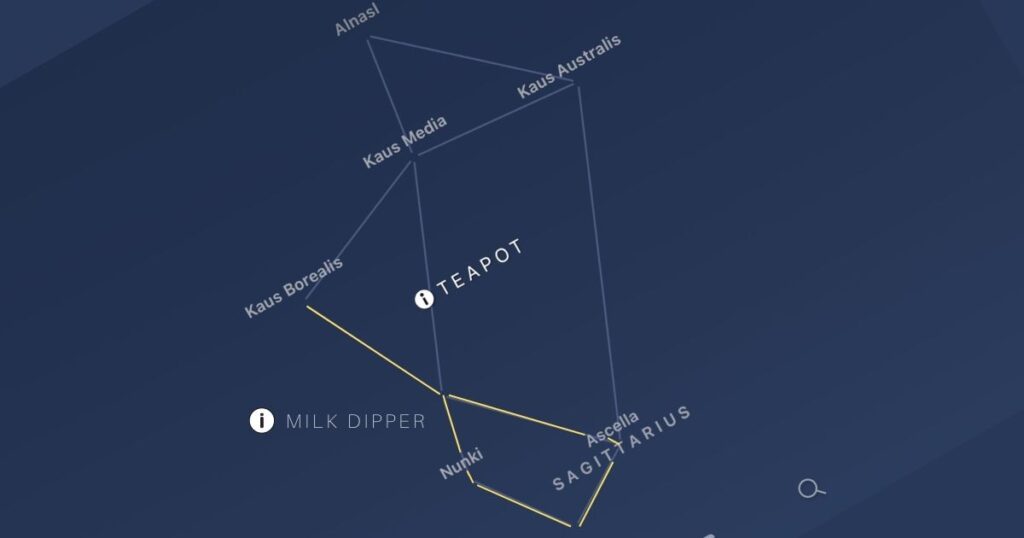
The Water Jar (yellow lines)
The Water Jar is best seen in spring in the southern hemisphere. It is a Y-shaped asterism that is centered on ζ Aquarii within the constellation of Aquarius.
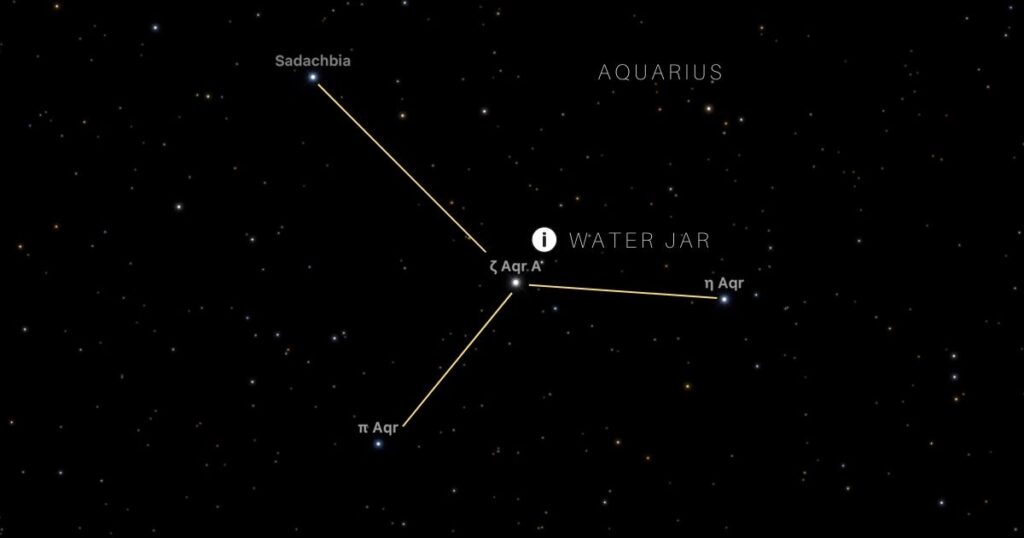
The Winter Hexagon
The Winter Hexagon in Orion is best seen in summer in the southern hemisphere.
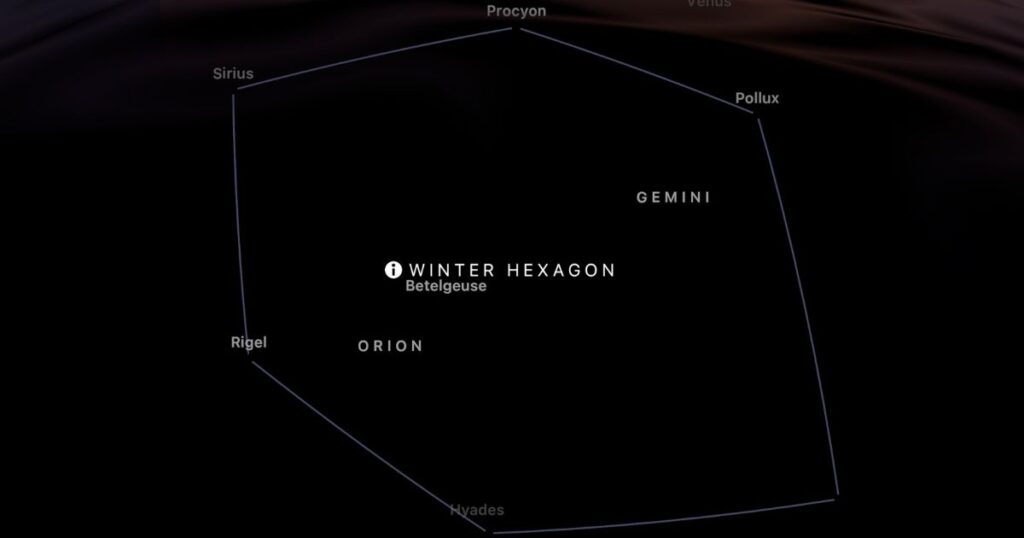
The Pointers and Southern Cross
The Pointers are the stars Alpha Centauri and Beta Centauri (Hadar). They are close to the Southern Cross (in the constellation of Crux). If you have trouble with whether you have the False Cross or the Southern Cross, look for the Pointers. They are the telltale sign of knowing.
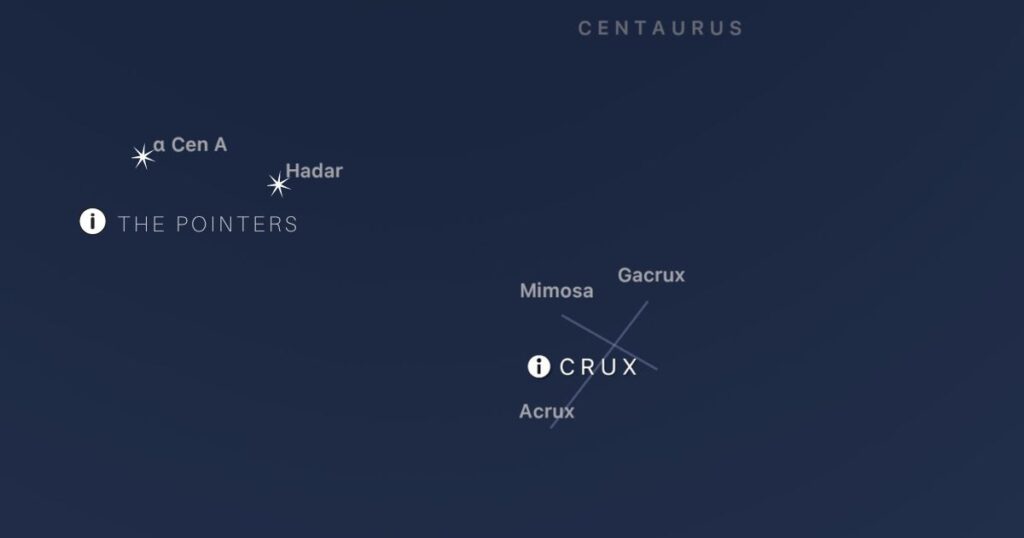
The Pointers are used together to find the celestial pole in the south. Extend the main axis of the Southern Cross in a line until it meets an imaginary line starting in the middle of the Pointers. This is the location of the celestial pole. Drop a line to the Earth and you have south on the horizon.
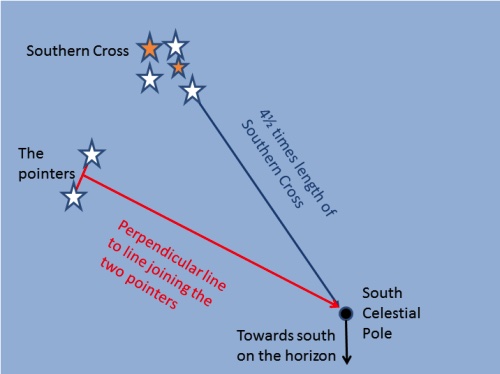
The False Cross
Sometimes mixed up with the Southern Cross, the False Cross is in the constellation of Carina, the Keel, and is best seen in Autumn.
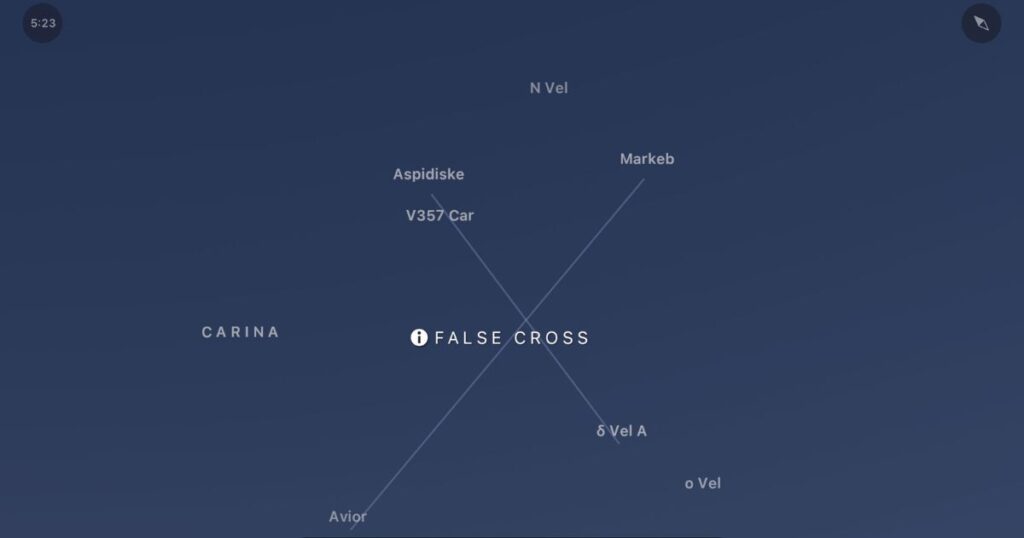
List of asterisms to look for in the Southern Hemisphere
| Asterism | Where to look | Best time |
| Kite | In Boötes | Winter |
| Milk Dipper | Within Teapot | Winter/Spring |
| Teapot | In Sagittarius | Winter/Spring |
| Great Square of Pegasus | In Pegasus | Spring |
| Summer Triangle | Cygnus (for Deneb), Lyra (for Vega) and Aquila (for Altair) | Spring |
| Circlet of Pisces | In Pisces | Spring |
| Water Jar | Y shape bottom of Aquarius | Spring |
| Seven Sisters | Pleiades star cluster in Taurus | Spring/Summer |
| Winter Hexagon | Look for the brightest star, Sirius, at the top | Summer |
| The Saucepan | In Orion | Summer |
| Pointers | Near the Crux | Autumn |
| Sickle | In Leo | Autumn |
| False Cross | Carina and Vela | Autumn |
| Big Dipper | Above northern horizon | Autumn |
| Southern Cross | In Crux. Look for the Pointers | Autumn |
Constellations best seen in the southern hemisphere
Unless close to the equator, stargazers in the northern hemisphere would have trouble sighting these southern circumpolar constellations. The circumpolar constellations, shown in the table below, circle the southern celestial pole and are said to be visible between latitudes +20° and −90°.
List of constellations in the southern sky (visible sth of +20º)
| Constellation | Common Name |
| Carina | The Keel |
| Centaurus | The Centaur |
| Crux | Southern Cross |
| Hydrus | Water Serpent (m) |
| Apus | Bird of Paradise |
| Chamaeleon | Chamaeleon |
| Volans | Flying Fish |
| Mensa | Table Mountain |
| Dorado | Swordfish |
| Musca | Fly |
| Indus | Indian |
Carina contains the 2nd brightest star in the sky, Canopus (Sirius is the brightest — see my star brightness chart).
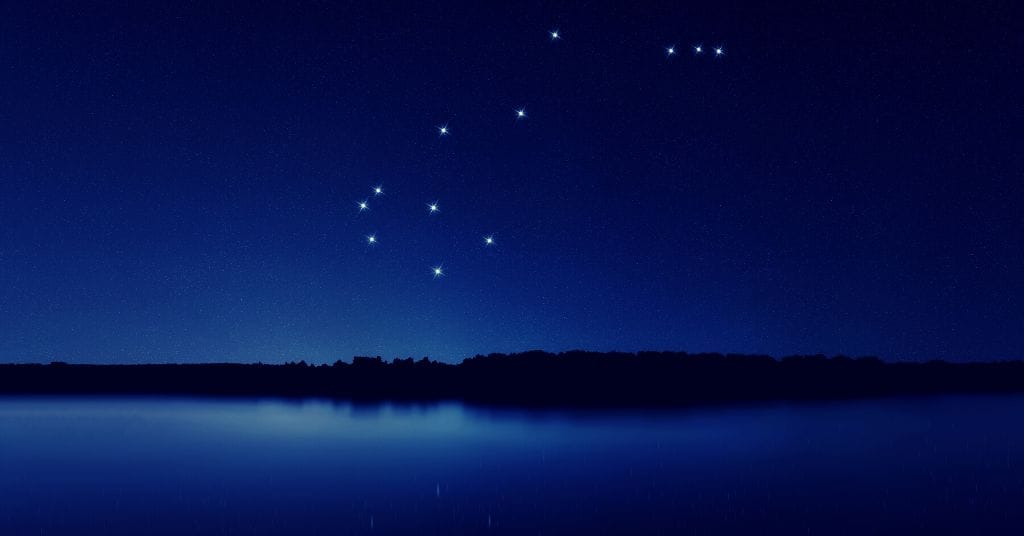
Image credit: Alexxander.
Centaurus on the other hand is the 9th largest of all constellations and contains Alpha Centauri, the 3rd brightest star in the sky.
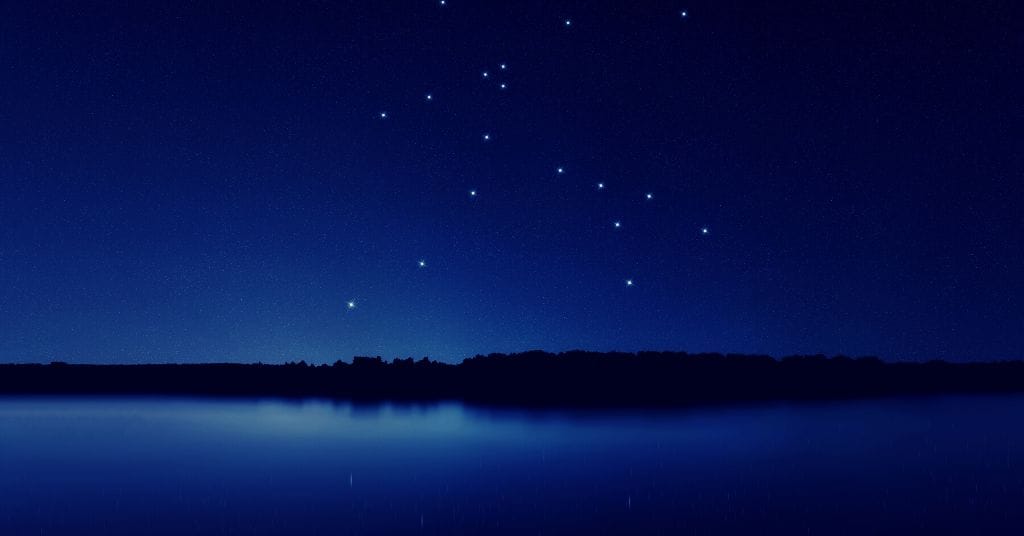
Image credit: Alexxander.
Dickinson in NightWatch describes how the southern hemisphere contains the best star clusters, globular clusters, and nebulas.
The Milky Way and The Emu in the Sky
The aboriginal people of Australia, from thousands of years ago, have recognized a constellation in the Milky Way, not from star patterns but from dark areas between the stars. The dark pattern depicts an emu, a large native bird of Australia.

This dark-sky constellation is best seen in June (Austral winter) in southern hemisphere skies away from city light pollution.
Can you see the dark emu in the sky in this image?
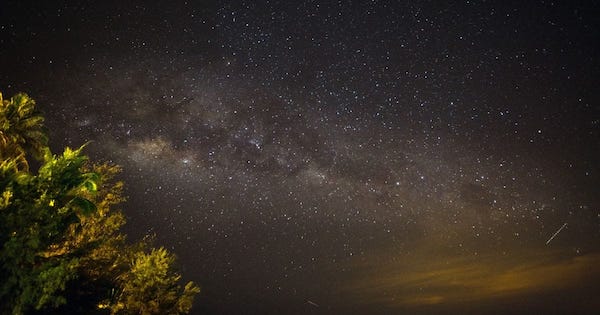
The emu is ‘flying’ across the sky with its head and legs out-stretched. The emu’s head is the Coal Sack (on the right in the image) and the legs are on the left. Just one of the interesting facts about the night sky.
Here’s an enhanced image…
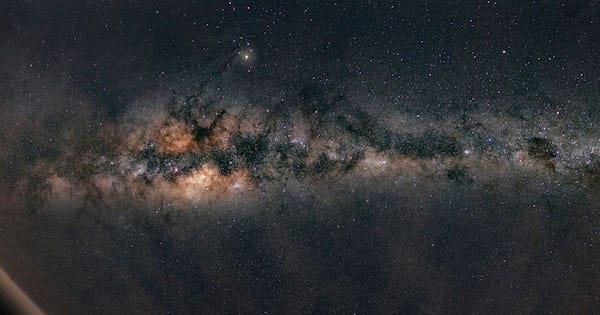
This dark-sky constellation goes by a few names, including the Celestial Emu. In native Gamilaraay speak, it’s called Gawarrgay.3
FAQs
Is Orion Visible In The Southern Hemisphere, To Those Living South Of The Equator?
Yes, but it appears upside down, and the asterism ‘The Saucepan’ is a more obvious star group known to backyard stargazers.
What About The Big Dipper?
Yes, some southern hemisphere watchers in the lower latitudes (the ones closer to the equator) will see The Big Dipper if they look above the northern horizon at particular times.
What Won’t You See In The Southern Hemisphere Sky?
You won’t see Polaris and you’ll have trouble seeing the northern circumpolar constellations. You won’t see the constellations the same way ‘up’ as in the northern hemisphere.
Why There Are Different Constellations In The Southern Hemisphere
From the southern hemisphere, the constellations appear inverted to how they look in the northern hemisphere sky. The reason is that the Earth is spherical, and you are looking at the sky from a ‘down under’ perspective.
Bottom line
Observing the night sky in the southern hemisphere gives a different perspective for stargazers.
Info sources
- Nightwatch, a Practical Guide to Viewing the Universe by Terence Dickinson (available at Amazon – affiliate). This book contains sky charts and has a spring binding so is practical for use on location.
- Astronomy Australia Year Guide to the Night Sky (affiliate link) by Wallace, Dawes, and Northfield includes all-sky maps and much more information for stargazing down under
- Astronomy: Sky Country (2022) (affiliate link) by Noon and De Napoli shares the first knowledge of the night skies of Australia.
I adapted the line images of the asterisms from Sky Guide app.
